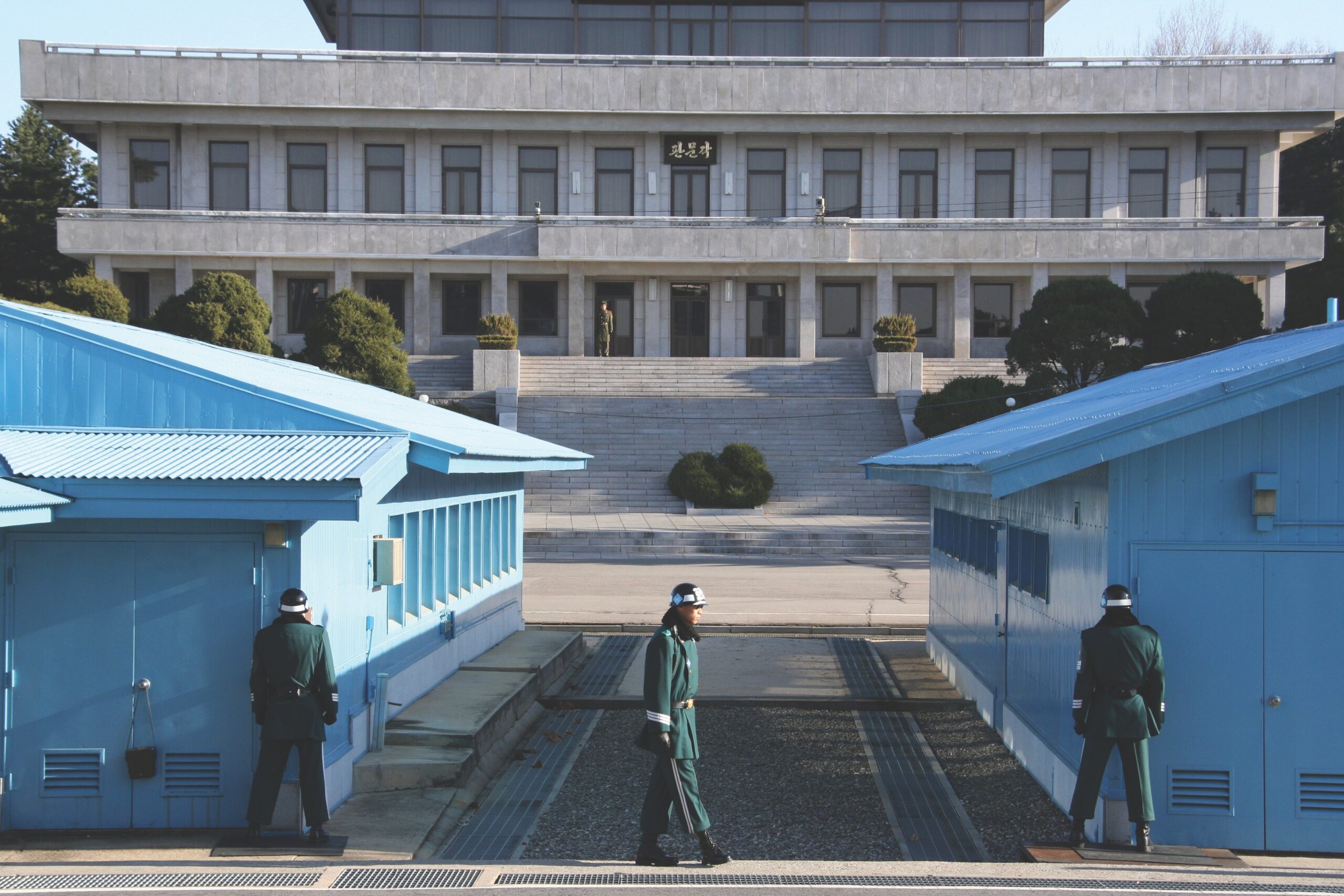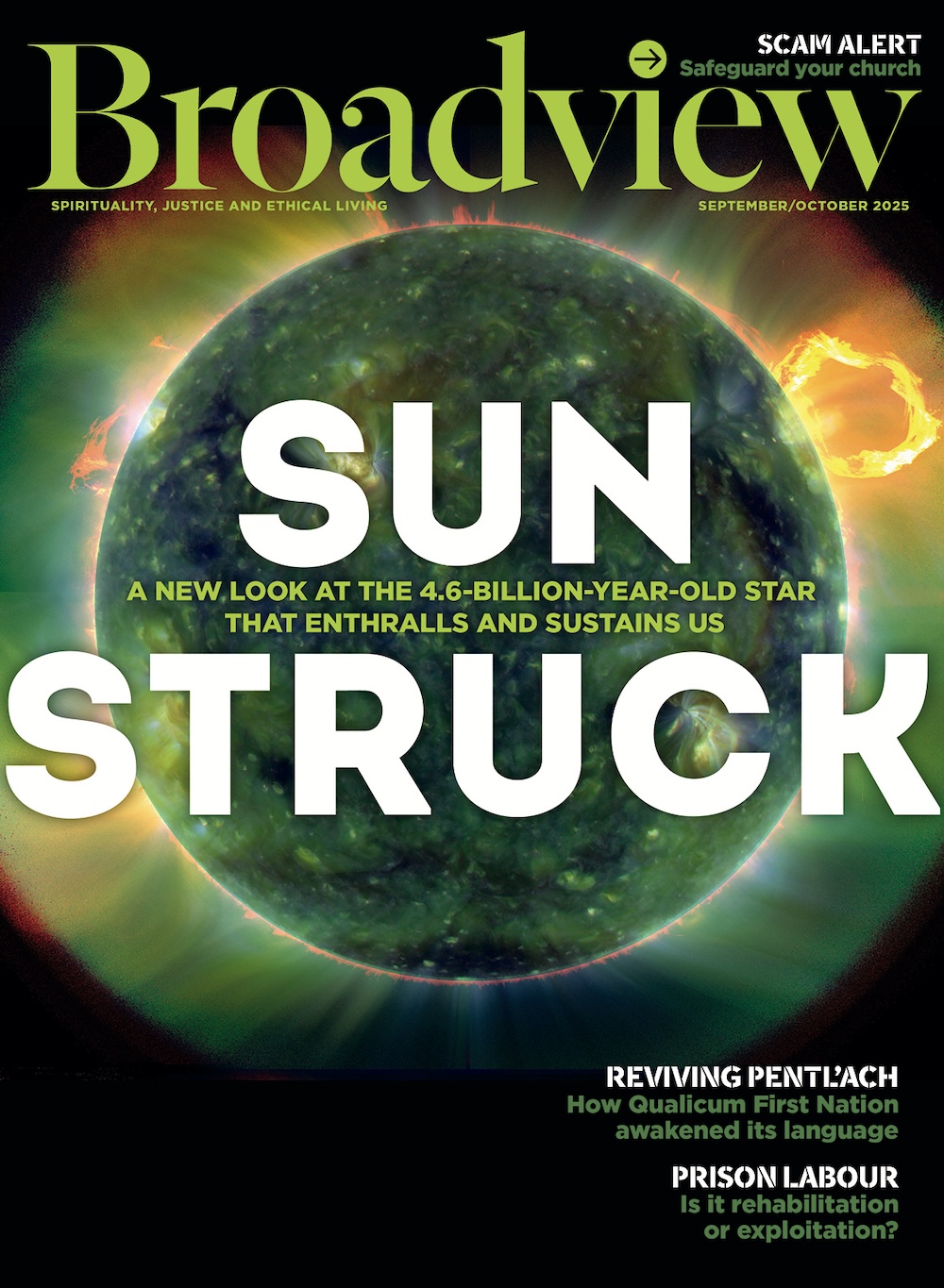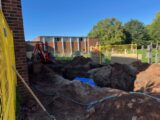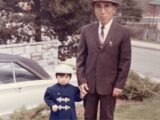In the place where the two Koreas come together, things often get weird. A strip of land about four kilometres wide, the United Nations-controlled demilitarized zone (usually known as just “the DMZ”) has served as an effective buffer along the 38th parallel for almost six decades, since the end of the Korean War. Guns, tanks and some 1.2 million landmines separate the Democratic People’s Republic of Korea (DPRK) to the north and the Republic of Korea (ROK) to the south, sworn enemies who also happen to be kin.
On the morning I visited, riding north from Seoul on a bus tour, I soon saw signs of this separation: barbed wire and guard towers lining the near banks of the Han River; surveillance cameras and guns pointing across at the North, which was hidden for the moment beyond a morning mist that hung above the dark water.
You may unsubscribe from any of our newsletters at any time.
We drove under a series of billboards that our guide informed us are filled with dynamite, designed to explode on enemy tanks in case of a surprise invasion. Passing through a series of checkpoints, we arrived at Camp Bonifas, where we boarded a UN bus driven by a South Korean soldier and were briefed by our U.S. army guide. “Please show the picture page of your passport, and be awake!” he boomed. “I’m not interested in any reindeer games!”
As we rolled into the DMZ, he told us some astonishing things — facts I could scarcely believe as I stared out my window at golden, rolling fields reflecting the fresh morning sun. Here, in 1976, two American soldiers were chopped to death by North Korean troops after trying to trim a tree limb obscuring the view between two checkpoints, an event now known as the “axe murder incident.” In 1984, a Soviet defector ran south across the line; the two sides opened fire on each other, leaving four dead.
Inside the DMZ, the North has built a village, a cluster of pleasant-looking buildings with no windows, no doors and not a single resident — the town exists for the sole purpose of propaganda. And for years, the two sides have played a game with flagpoles, building ever-taller standards holding ever-bigger flags. At one point the DPRK’s flag collapsed under its own weight, but the North has since made improvements — it now boasts the largest flag in the world.
Such things may sound silly — and shocking — to the casual observer, but they are commonplace on the Korean peninsula, separated since 1953 when an armistice was signed. The agreement paved the way for an end to hostilities but left North and South technically in a state of war with one another to this day. In the years since then, the two sides have taken very different paths. Like yin and yang, whatever the North does, the South does the opposite, to the max (and vice versa).
While the North has pursued a path of strict Soviet-style communism, the South has become almost hypercapitalist, rapidly building one of the largest and strongest economies in the world. Shedding its military rulers in the 1980s, the South now enjoys a robust democracy, while the North has introduced the world’s first dynastic communist system, a personality cult with power passing from father to son to son. As the South embraces freedom and prosperity, the North offers repression and chronic famine.
Defended by a UN-sanctioned alliance of European and North American nations (including Canada), the South has long been a westward-looking place. Turning on my Samsung TV my first night in Seoul, I saw that three different channels were broadcasting live baseball games, while many others featured videos and concerts by attractive girl and boy bands. Korean pop culture has become dominant in East Asia, a phenomenon known as the “Korean Wave.”
Over the next couple of days, I threw myself into South Korea’s youth culture, singing and chanting along with fans at an LG Twins baseball game, and shopping at the massive Lotte World department store. I even danced “Gangnam style” with hundreds of students at a “silent disco” in a park, the sounds of homegrown pop sensation PSY and others piped into our wireless headphones. All of it seemed a marvel, given that just a few dozen kilometres away, citizens of the North were making do with little or no electricity.
With equal enthusiasm, the South has thrown itself into religion — an evangelical, often charismatic style of Protestant Christianity. The faith has grown exponentially since the end of the Korean War, with Christians now making up about a third of the population. Red and white crosses rise from the steeples of more than 60,000 churches, and South Korea today sends more missionaries out into the world than any other nation save the United States. (The United Church of Canada has been active in the country since 1955, supporting partners dedicated to peace, workers’ rights and gender justice.)
To see this zeal close up, I made my way on a Sunday morning to the largest congregation in the world, the Yoido Full Gospel Church. Founded by a man named Yonggi Cho, a former Buddhist who was converted by an American nurse as he lay in hospital with tuberculosis, Yoido grew from five original members praying under the shelter of a cheap tent pitched in the worst neighbourhood of Seoul. Now, over 600 pastors and 15,000 deacons shepherd a flock numbering more than 800,000; the church runs multiple television programs and the fourth-largest daily newspaper in Korea, not to mention a fully accredited university and a retreat compound known as “prayer mountain,” where more than 1.5 million faithful guests visit each year to pray for the North.
The fervency of belief at Yoido is startling — the church holds all-night prayer meetings every night of the week, and members are challenged to read five chapters of the Bible and pray for an hour each day. Seated in the “foreigners’ section” of the massive church sanctuary, listening through earphones to a live English translation of the service, I feel this intensity — in the praise songs led by a choir of hundreds, in the sections of the service reserved for congregants to cry out unreservedly to God.
Afterward, I chatted with Jim Donnet, a New Yorker married to a Korean woman; he has lived in South Korea for some 30 years and serves as a deacon at Yoido. He explains that Korea has always found itself caught between the superpowers of China and Japan, with the Japanese imposing a harsh and humiliating colonial rule over Korea for the first half of the 20th century. The Christian message gave Koreans a unique identity as well as hope and strength after the death and desperation of war.
Donnet observes that Christianity continues to offer strength, albeit in a much different context. Prosperity has its discontents, especially in a go-go, driven society like South Korea. “For kids, if they can’t get into the best universities, they lose face and actually believe that they taint the family bloodline,” he says. “People are under a great deal of stress.”
Despite all the pressures, the church hasn’t forgotten about its less fortunate cousins. Yoido is building a hospital in Pyongyang and sending aid to the North, and members are passionately praying for national healing.
Will their pleas be answered? Time will tell, but things aren’t looking good. In the North Korean capital, the new leader — grandson of the Dear Leader — has shown few signs of softening. Back at the DMZ, the hostility continues unabated — day after day, the two sides stare intently at one another, neither willing to blink, while the flags behind them just get bigger and taller. God is in the business of healing dysfunctional families, but this one? It might just take some sort of miracle.
***
This story first appeared in The United Church Observer’s February 2013 issue with the title “Korea’s great divide.”













